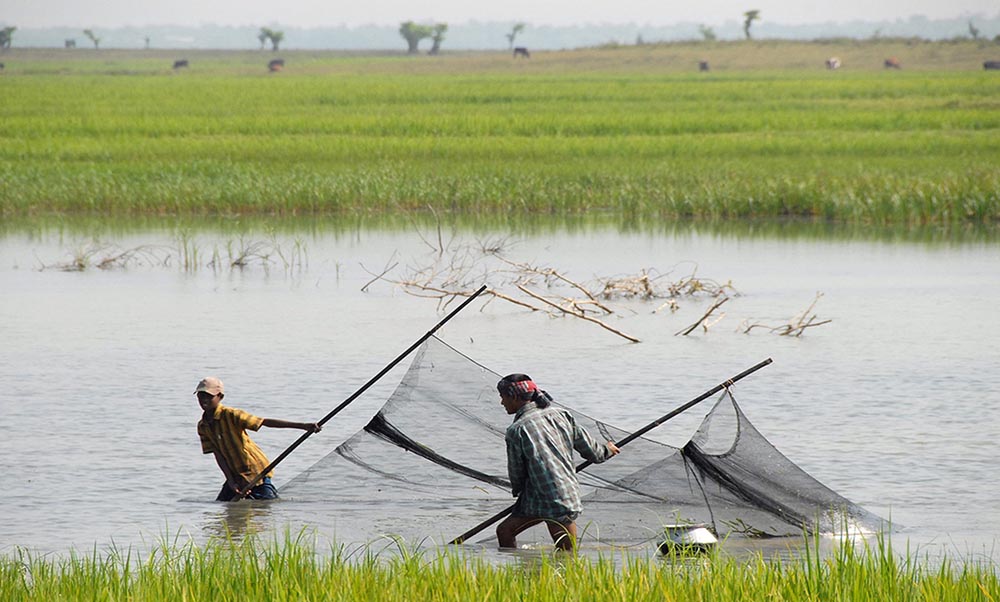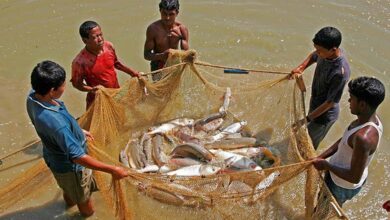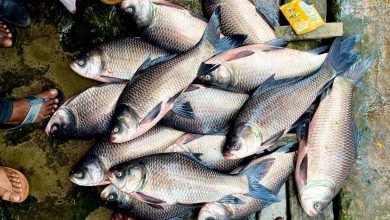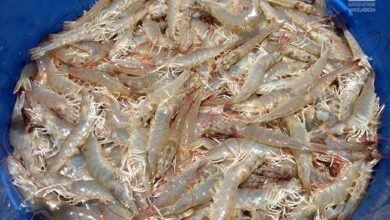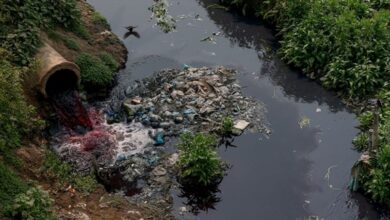Over the last half a decade, Bangladesh fisheries sector’s contribution to the economy has been steadily declining, primarily due to a significant drop in sales caused by surging inflation. Other factors that have contributed to this recent decline include low production growth, a substantial increase in input costs, and a decrease in export-based trade.
According to the Ministry of Finance Economic Review for 2023, the fisheries sector’s share of the country’s gross domestic product (GDP) decreased from 2.70% in fiscal year 2019 to 2.41% in fiscal year 2023.
The local sale of fishes also saw a notable decline in the last year, with prices surging by 40-50%, according to the Trading Corporation of Bangladesh (TCB) and the Bangladesh Fish Development Corporation (BFDC). The cost of cultured fishes, a crucial source of protein for the general population, increased by 30-40% in 2022 compared to 2021, representing an unprecedented rise in fish prices within a single year. This surge in prices, particularly for species like Rui or Rohu (Labeo rohita), Tilapia, Pangasius, Koi, and others, was mainly driven by the skyrocketing trend in fish-feed prices, resulting in reduced production of certain species.
As a result of these price hikes and reduced sales, the growth in the Bangladesh fisheries sector has been negatively impacted. Despite the significant increase in fish prices, the sector’s contribution to GDP only saw a 7% increase, indicating a decline in essential trading during this period. Production of Pangasius, a vital fish for the lower-income groups, decreased by 20% over the last five years, reflecting the challenges faced by millions of people amid the Covid-19 pandemic and subsequent conflict in Europe that began in February 2022.
The increase in fish-feed prices by 75-80% in the last two years compelled pond owners to shift towards cultivating high-value fishes like Pabda (Ompok bimaculatus), Golsha (Mystus bleekeri), Rui or Rohu, and Catla (Catla catla). However, this shift led to a 50% increase in production costs and a 40% drop in sales.
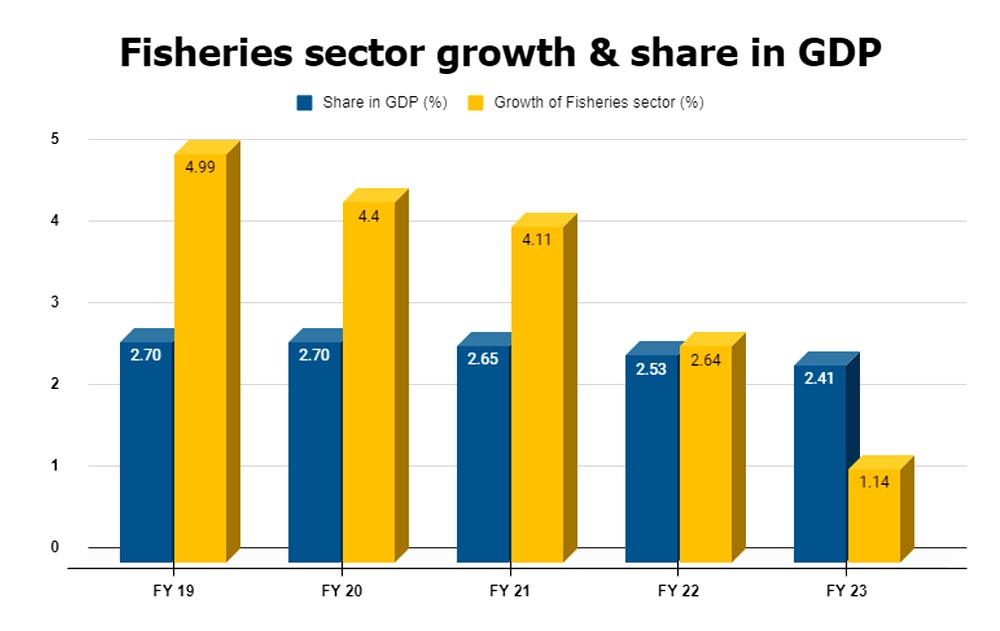
Furthermore, the export of fisheries, including shrimp, crab, eel, and other fishes, has been continuously declining since FY’13-14, falling from US$638.19 million to US$400 million in FY’20-21. Although there was a temporary increase in exports in FY’21-22, it declined again in FY’22-23, primarily attributed to lower demand in Europe, exacerbated by higher inflation and the Russia-Ukraine conflict.
Here to mention, Bangladesh has got the GI product certificate (Recognition of Geographical Indication Product) for native shrimp species Bagda or Black Tiger Shrimp (P. monodon) but our failure to brand and get the best of it along with other prominent local crustaceans, like Galda or Freshwater prawn (M. Rosenbergii) and Harina (Metapenaeus monoceros) in the international market. Moreover, the inability to tap into the low-priced global market segment which is dominated by Vannamei shrimp also contributed to the decline in fisheries exports. Additionally, the lack of quality feeds and infrastructure has hampered the country’s potential to export Pangasius, Tilapia and other processed fish.
Currently, Bangladesh produces total 4.7 million tons of fish in FY’22-23, with only a fraction of that (60-70 thousand tons) being exported. The government aims to increase fish production to 8.5 million tons by 2041. It’s an ambitious target for the current scenario for cultured fish production but not impossible.
The revitalization of the fisheries sector requires starting from the initial stage of the value chain, which is the “Hatcheries.” Ensuring the availability of high-quality fries (fish/shrimp) by closely monitoring hatcheries, providing training for commercial aquaculture, embracing modern technology, facilitating access to funds or formal banking for farmers, implementing efficient cold chain management and reducing dependence on intermediaries are the key priorities for this sector.
Taking a comprehensive approach involving all stakeholders is essential to promote the branding of local shrimps/fishes through the implementation of guidelines by internationally recognized certification organization like Best Aquaculture Practice (BAP) and Aquaculture Stewardship Council (ASC). To boost local product visibility, organizing international fairs, enhancing export infrastructure for Pangasius and Tilapia, establishing modern fish/shrimp processing plants, and supporting ventures related to more affordable species like Vannamei are crucial steps that could lead to success in Bangladesh’s fisheries sector.

